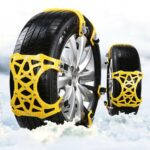Directional control valves (DCVs) are a fundamental component in hydraulic systems designed to control the flow and direction of fluid within the system. By selectively opening, closing, or changing the pathways within the valve, DCVs ensure the correct flow of hydraulic fluid to the desired components, thus allowing precise control over the movement and functioning of hydraulic machinery. Their pivotal role in directing fluid flow accurately makes them indispensable for efficient and safe hydraulic system operations.
Core Working Mechanism
Directional Control Valves (DCVs) operate by changing the position of internal moving parts, primarily a spool, to control fluid flow. Here’s a step-by-step breakdown of how they function:
- Spool Positioning:
- The spool within the valve is shifted manually, mechanically, electrically, or hydraulically.
- When the spool moves, it opens or closes various channels within the valve body.
- Flow Control:
- As channels open or close, the path of the fluid is altered, controlling the fluid flow.
- The fluid is directed towards desired components or returned to reservoirs.
- Achieving Desired Actions:
- By directing fluid flow, DCVs enable the activation or deactivation of hydraulic cylinders or motors, translating to the desired mechanical actions.
- Neutral Position:
- In neutral, the valve blocks the fluid flow or allows it to bypass, depending on the valve design.
- Seals and Springs:
- Seals prevent leakage, maintaining the system’s pressure, while springs help return the spool to its neutral or original position after actuation.
Directional Control Valves are crucial for executing controlled movements within hydraulic systems, fulfilling the requisite operations accurately and efficiently.
Internal Components and Their Roles
The operation of Directional Control Valves (DCVs) hinges on its internal components. Here’s an analysis of these crucial elements:
- Spools:
- The spool is the heart of the DCV, controlling the flow paths when it slides within the valve body.
- Its positions (open, closed, partially open/closed) determine the direction of fluid flow.
- Springs:
- Springs are used to return the spool to its neutral or original position after actuation.
- They ensure the spool reverts to a safe position, which is crucial for system safety and function.
- Ports:
- Ports are the pathways through which fluid enters or exits the valve.
- They are designated as inlet (P), outlet (T), and working (A & B) ports in most DCVs.
- Seals:
- Seals prevent fluid leakage between the spool and the valve body, maintaining system pressure.
- They also ensure the channels within the valve remain distinct, directing fluid accurately.
- Actuators:
- Actuators, such as manual levers, mechanical cams, or solenoids, facilitate the movement of the spool or poppet.
- They initiate the change in spool position to control fluid flow.
- Detents:
- Detents hold the spool in position during operation, ensuring consistent fluid direction.
- Housings:
- The housing encases all internal components, providing support and ensuring alignment.
- Positioners:
- In advanced DCVs, positioners provide feedback to ensure the spool reaches the desired position, ensuring precise control.
These internal components work in harmony to ensure the directional control valve operates efficiently, directing fluid flow as required to achieve the desired hydraulic system performance.
Operating Modes of Directional Control Valves
Directional Control Valves (DCVs) have various operating modes to suit different applications. Below is a comparative table outlining these modes:
| Operating Mode | Actuation Mechanism | Typical Usage | Ideal For |
| Manual Operation | Hand levers or foot pedals | On-the-spot adjustments, precise control | Simple, direct control scenarios |
| Mechanical Operation | Cams, rollers, or springs | Automated systems triggered by mechanical movement | Automated systems with mechanical triggers |
| Electrical Operation (Solenoid-Operated) | Electric current via solenoids | Remote control or automated systems | Systems requiring electrical signal control |
| Hydraulic Operation | Hydraulic pressure from a pilot valve | Controlling high flow rates or pressures in complex systems | Complex hydraulic systems |
Understanding the operational modes and their distinct advantages is crucial for selecting the appropriate Directional Control Valve for your hydraulic system based on the application, control precision, and system complexity.
Applications of Directional Control Valves
Directional Control Valves (DCVs) are crucial for managing fluid flow in hydraulic systems finding a range of applications across various fields. Here are some notable uses:
Industrial Hydraulic Systems:
- Ensuring smooth operations and safety in manufacturing and assembly lines.
- Regulating hydraulic functions of lifts, cranes, and other material handling equipment.
Mobile Hydraulic Systems:
- Operating hydraulic systems within construction equipment like excavators and loaders.
- Controlling hydraulic functions in agricultural machinery such as tractors and harvesters.
Aerospace and Defense:
- Managing fluid flow in aircraft hydraulic systems for landing gear, brakes, and flight control surfaces.
- Facilitating hydraulic operations in military vehicles under demanding conditions.
Marine Applications:
- Controlling hydraulic operations on ships like steering systems, winches, and ramp controls.
Automotive Applications:
- Regulating hydraulic flow in automotive lifts for safe and efficient lifting and lowering of vehicles.
Renewable Energy Systems:
- Controlling hydraulic systems within wind turbines to optimize blade positions for maximum energy capture.
The diverse applications of Directional Control Valves underline their pivotal role in ensuring efficient and safe hydraulic system operations across a wide spectrum of industries.
Maintenance and Troubleshooting
Proper maintenance and prompt troubleshooting are vital for the longevity and efficient operation of Directional Control Valves (DCVs). Here are some practical tips:
Maintenance:
- Regular Inspection: Periodically inspect the DCVs for signs of wear, damage, or leakage. Ensure all connections are tight and the seals are in good condition.
- Cleaning: Keep the valves clean from dirt, debris, and other contaminants that could obstruct fluid flow.
- Lubrication: Ensure adequate lubrication to reduce friction and wear.
- Replacement of Worn Components: Replace any worn or damaged components promptly to prevent further damage or system failure.
- System Pressure Checks: Regularly check the system pressure to ensure it’s within the specified range for the valve.
Troubleshooting:
- Leakage: Check for loose connections or worn seals if there’s any leakage.
- Erratic Operation: Inspect for dirt or debris within the valve, which could cause intermittent operation.
- Failure to Shift: Check the actuation system, whether manual, mechanical, or electrical, for issues that could prevent the valve from shifting.
- Inadequate Flow: Inspect for obstructions or incorrect valve size, which could reduce flow.
- Unwanted System Movements: Investigate for incorrect valve positioning or malfunctioning components.
A systematic approach to maintenance and troubleshooting will significantly enhance the reliability and performance of Directional Control Valves in your hydraulic systems.
Real-World Examples
The versatility of Directional Control Valves (DCVs) is showcased through their practical applications in real-world scenarios, controlling fluid flow within hydraulic systems for various tasks. For instance, at construction sites, DCVs in hydraulic excavators facilitate precise digging and material handling by controlling the movement of the boom, arm, and bucket. Similarly, in manufacturing facilities, they regulate hydraulic presses on assembly lines for accurate and safe pressing operations.
In agriculture, DCVs in tractors help manage attachments like loaders and plows, aiding in various farming tasks. Automotive workshops leverage DCVs in automotive lifts to ensure the safe and controlled lifting and lowering vehicles for maintenance and repair. The renewable energy sector benefits from DCVs in hydraulic wind turbine systems to efficiently control the angle of turbine blades for optimal wind energy capture.
Marine operations rely on DCVs to regulate hydraulic steering systems on ships, enabling precise navigation. In the aerospace industry, DCVs play a crucial role in managing hydraulic systems in aircraft, controlling landing gear, brakes, and flight control surfaces for safe flight operations. Lastly, in fire rescue operations, hydraulic rescue tools powered by DCVs assist in extricating individuals from vehicles after accidents, showcasing the importance of DCVs in emergency services.
These examples delineate the essential role of Directional Control Valves in enabling controlled fluid flow, which is fundamental for the effective operation of hydraulic systems across many applications and industries.
Closing Thoughts
Directional Control Valves (DCVs) serve as the backbone of hydraulic systems, orchestrating the flow and direction of fluid to ensure precise control over the mechanical actions of machinery and equipment. Here are the key takeaways from our exploration of DCVs:
- Core Working Mechanism: The core mechanism of DCVs revolves around the movement of a spool or poppet, which alters the pathways within the valve, directing fluid flow.
- Variety and Versatility: A wide range of DCV types and operating modes cater to diverse applications, from industrial and mobile hydraulic systems to aerospace and marine operations.
- Internal Components: The synergy of interior components like spools, springs, ports, and actuators ensures the efficient operation of DCVs.
- Maintenance and Troubleshooting: Regular maintenance and prompt troubleshooting are crucial for the longevity and efficient operation of DCVs, ensuring they continue to function optimally.
- Real-World Applications: The myriad real-world applications of DCVs underscore their indispensable role in modern hydraulic systems across industries.
- Selection Based on Application: The selection of the right DCV and its operating mode is crucial based on the specific requirements of the hydraulic system and the desired control precision.
Understanding the working principle and functionalities of Directional Control Valves is pivotal for individuals and industries keen on harnessing the potential of hydraulic systems effectively. As we delve into the technicalities and practical applications of DCVs, the essence of their role in controlling fluid dynamics becomes profoundly clear, hinting at the expansive realm of possibilities they unveil in the sphere of hydraulic control.







